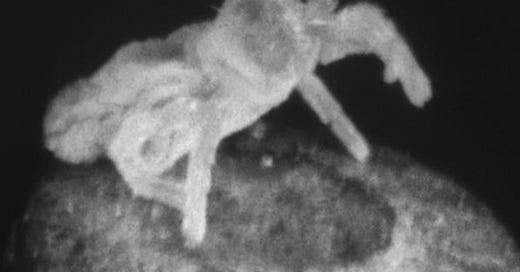The Korea Disease Control and Prevention Agency (KDCA) announced on October 22nd that the occurrence of chiggers, the main vector of scrub typhus has begun to increase and caution should be taken against chigger bites when engaging in outdoor activities.
Tsutsugamushi disease can occur after being bitten by the larvae of chiggers carrying the tsutsugamushi bacteria (Orientia tsutsugamushi), and is characterized by the appearance of an eschar (black scab) within 10 days after the bite. Main symptoms include fever, muscle pain, spotty rash, and lymphadenopathy.
Surveillance of the occurrence of chiggers is being conducted in 20 regions nationwide from the fourth week of August to the third week of December.
It is known that there are a total of 8 species of chiggers that transmit the tsutsugamushi bacteria in Korea (Leptotrombidium scutellare, L. pallidum, L. palpale, L. orientale, L. zetum, Neotrombicula japonica, Euschoengastia koreaensis, Helenicula miyagawai ), and according to the 2023 surveillance results, the chiggers are mainly found in the southern, western, and northern regions, while the chiggers are mainly found in the central and northeastern regions.
In addition, the occurrence of chiggers begins to increase when the average temperature is below 18℃, is active at 10~15℃, and shows a tendency to decrease when the temperature drops below 10℃.
Looking at it by period, the number of chiggers begins to increase from the 40th to the 42nd week (late September to early October), and the number of patients increases significantly from the 43rd week to the 47th week (mid-November).
Director Young-Mi Ji of the Korea Disease Control and Prevention Agency urged, “As the probability of contact with chiggers may increase during the harvest season and the fall foliage season, we should minimize exposure to risky environments to prevent tsutsugamushi disease,” and emphasized, “When doing farm work or engaging in outdoor activities, we should follow preventive measures such as wearing long-sleeved clothing and long pants to avoid being bitten by chiggers.”
In addition, “since tsutsugamushi disease can be cured with antibiotic treatment in the early stages of infection, early detection and treatment are important. If a tick bite mark (eschar) is observed after outdoor activities and symptoms such as fever or rash appear within 10 days, tsutsugamushi disease should be suspected and a medical institution should be visited for treatment,” he urged.
Subscribe to Outbreak News TV on YouTube
Scrub typhus is a disease caused by bacteria called Orientia tsutsugamushi. Scrub typhus is spread to people through bites of infected chiggers (larval mites). The most common symptoms of scrub typhus include fever, headache, body aches, and rash.
Most cases of scrub typhus occur in rural areas of Southeast Asia, Indonesia, China, Japan, the Indian subcontinent, and northern Australia.





